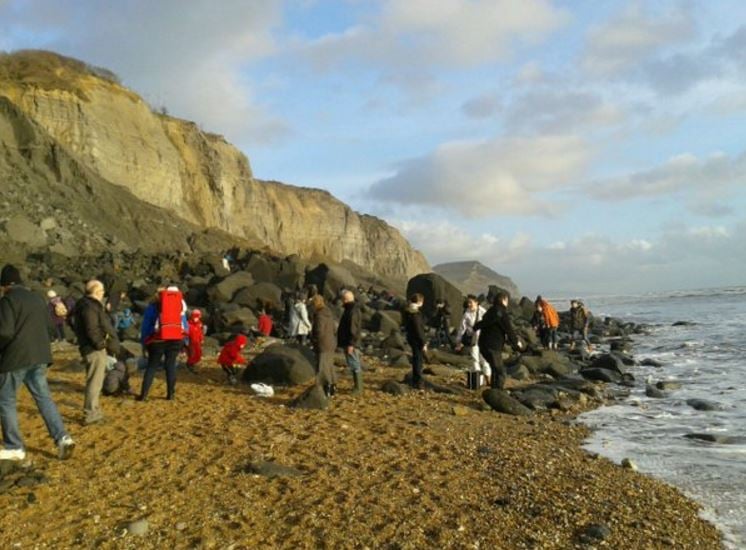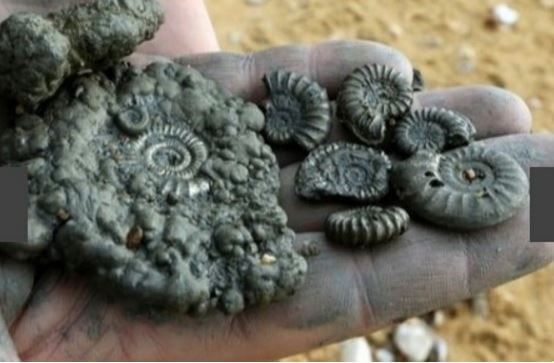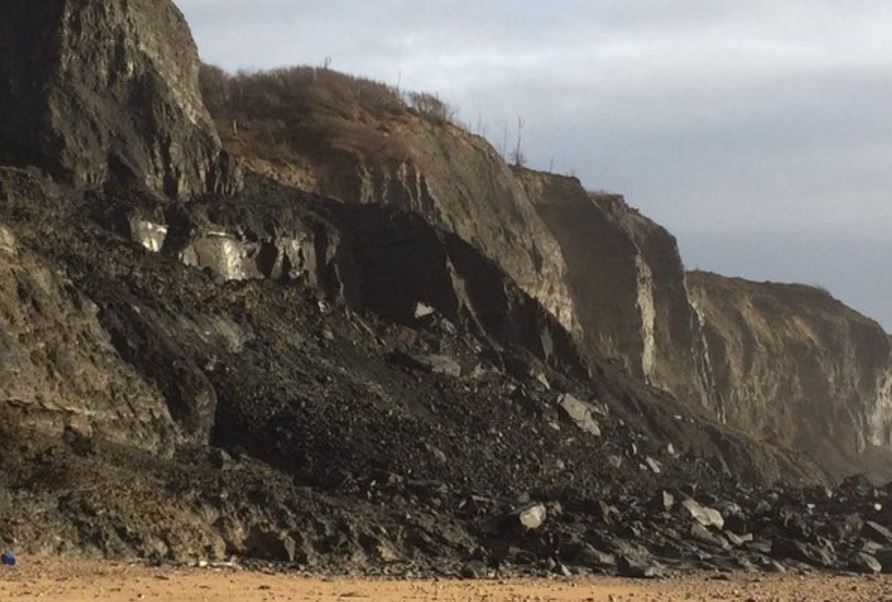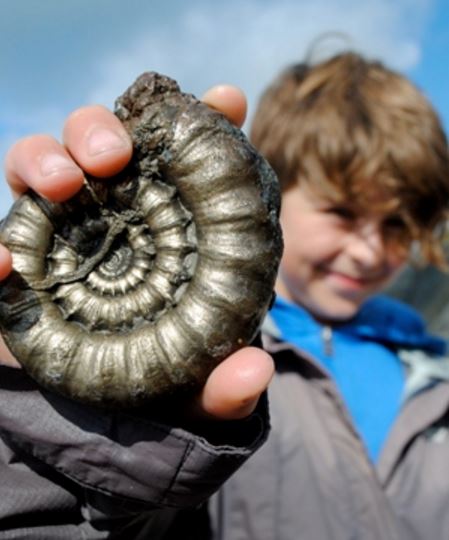A fossil frenzy at Charmouth, the gateway to the Jurassic Coast, followed a major cliff fall as people went about looking for fossils washed up by the sea. Mudflows and landslides are common at the Charmouth cliffs, which are made of many layers of clay, silt and soft mud.
Charmouth, a village at the mouth of the River Char in West Dorset, England, is on an ancient coastline of dramatic cliffs, fossils and beautiful scenery.
It is known for its guided fossil hunting walks on the Jurassic Coast World Heritage Site.
 There was chaos at Charmouth following the cliff collapse. (Image: twitter.com/culturediver)
There was chaos at Charmouth following the cliff collapse. (Image: twitter.com/culturediver)
The Western Morning News quoted Tony Gill, owner of the Charmouth Fossil Shop, who said:
“I looked across the beach the and realised it looked very different. It’s the biggest fall I’ve seen down here for years, if not the biggest. Now we need the tide to come in and wash the clay.”
Most of the fossils in the area are ammonites – an extinct group of marine mollusc animals – a few inches in diameter. Occasionally specimens two feet wide have been found.
Mr. Gill said:
“Finding a big one is like one in a thousand. Some of the blocks are as big as cars and may take up to a couple of years to properly wash away.”
Local authorities say several cliffs and cliff edges have become unstable after the recent heavy rains.
Charmouth cliffs formed over millions of years
According to the Charmouth Heritage Coast Centre, the cliffs at Charmouth are made up of several layers of soft mud, silt and clay that have built up over many millions of years.
 Ben King managed to find some good ammonite specimens. (Image: twitter.com/benking01)
Ben King managed to find some good ammonite specimens. (Image: twitter.com/benking01)
These are classified as ‘Sedimentary Rocks’, because they are made up of billions of super-tiny particles of sediment that have turned to stone following millions of years of pressure from the layers above.
The layers that make up the Charmouth cliffs were laid down at the bottom of a calm see approximately 195 million years ago, in the Early Jurassic, and consist mostly of mud, clay and limestone.
Close to the top of the cliff, the rocks change from a dark grey to a golden yellow colour. This top Certaceous layer sits over an unconformity (surface between successive strata representing a missing interval in the geologic record of time), a time gap where the rock record has been worn away.
 If you are out fossil hunting by the Charmouth cliffs be careful. (Image: twitter.com/Greg1954)
If you are out fossil hunting by the Charmouth cliffs be careful. (Image: twitter.com/Greg1954)
Cliffs very unstable
The Centre warns that the cliffs around Charmouth are extremely unstable – there are landslides and mudflows all the time.
Because of their instability, it is important that visitors act responsibly when fossil collecting. The Centre offers the following advice:
– DO NOT go near the cliff face.
– DO NOT climb on mudflows or landslides.
– DO NOT try to dig or hammer into the cliff face, mudflows or landslides.
 Kids love fossil hunting on the beach, especially when they find something interesting. (Image: www.charmouth.org)
Kids love fossil hunting on the beach, especially when they find something interesting. (Image: www.charmouth.org)
The best specimens are generally found loose among the pebbles on the beach.
Video – A fossil collectors at Charmouth
Professional fossil collectors talk about the hours they spend searching the shores around Charmouth, and show us some of their finds, which they display and sell in their local fossil shops.

